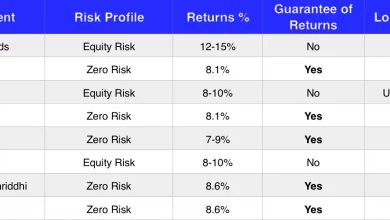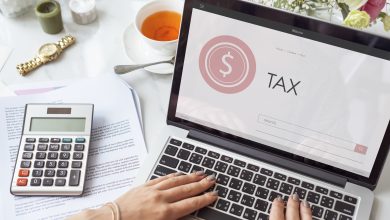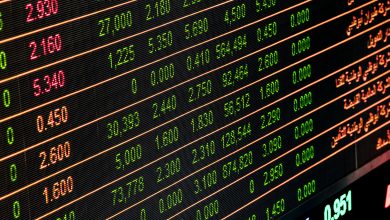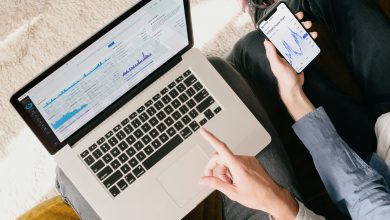The essentials of DAX GER 30 Index: How it works
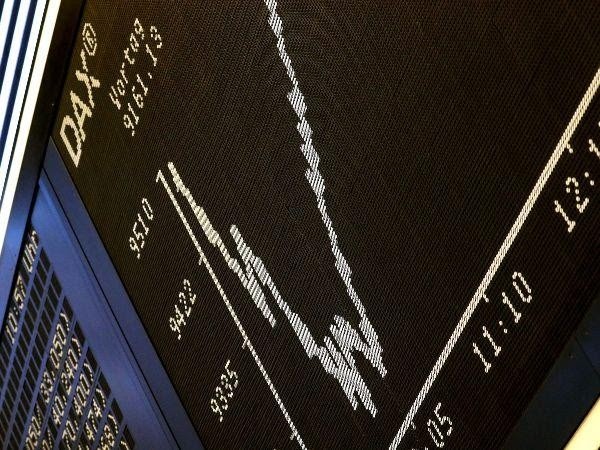
Table of contents
What is DAX index?
The DAX Live Chart shows the index quotes in real time and allows you to analyze them using major technical indicators.
DAX is the German Blue Chip Index. Its calculation is based on the shares of the thirty largest companies in terms of capitalization – all DAX 30 companies trade on the Frankfurt Stock Exchange (FSE). The DAX 30 also includes the reinvestment of dividends received from its constituent shares.
Given that Germany is the locomotive of the European economy, DAX can reflect the state of the economy of the entire European Union.
DAX trading hours
One of the most common tools for trading stock indices is futures. DAX Index contracts are traded on the European Exchange (Eurex), where they are assigned the FDAX ticker. The futures size corresponds to the online DAX 30 index multiplied by €25. The minimum price change is 0.5 pips or 12.5 euros. DAX opening time is 01:00. Trading lasts until 22:00 by Central European Time (CET).
Between 09:00 and 17:30 CET, the average live DAX 30 value is calculated. Later, in the interval from 17:30 to 20:00 CET, the Late-DAX (L-DAX) is calculated using a similar formula.
Another type of futures for the German Blue Chip Index, Mini-DAX Futures, is traded on the Eurex exchange. Their cost is equal to the DAX 30 index rate multiplied by 5 euros. Mini-contracts are traded on the platform under the FDXM code from 01:00 to 22:00, just like standard futures. Such tools allow even traders with a small deposit to trade the index.
The DAX index history
DAX was created and became known to the public on July 1, 1988. However, the calculation formula was derived in the early 1980s. DAX was created as an index tracking the status of blue chips in Germany and replaced the then popular Hardy-Index, Borsen-Zeitung and ASB.
All companies included in the live DAX futures basket belong to the so-called Prime Standard segment of the Frankfurt Stock Exchange.
Prime Standard is a part of companies that meet more stringent requirements than standard ones.
The aggregate capitalization of the companies included in the GER30 exceeds $1 trillion, the capitalization of these companies is about 80% of the aggregate capitalization of all German companies whose shares are traded on the stock exchange.
What factors affect the DAX Index today?
- The economic situation in Germany. Despite the fact that the DAX index chart cannot fully be considered an indicator of the German economy, the companies whose shares are included in it represent a significant part of it. They and, accordingly, the index itself, in one way or another, reflect the general market trends.
- EU economy. Germany is not only the largest European economy, but also a powerful catalyst for change in other countries in the region. Changes somehow related to the EU tend to affect the DAX live chart as well.
- Significant fluctuations in the quotes of individual stocks that make up the index. Due to the relatively small number of securities included in the index, fluctuations in the rate of any of them may change the value of the index as a whole. For example, Siemens, the largest manufacturer of electrical equipment, holds more than 10% of the DAX live quote, so any major change in the stock price of this issuer will entail a change in the entire index.
- Global trends. International markets are highly interconnected and the companies in DAX live chart operate in many countries around the world, so it can be influenced by any significant event in any market or global trend.
Is DAX a purely German index?
Most of the indices (especially those that are considered to be the leading stock indicators and which are most often featured in the news) are regarded as a tool for assessing the state of the economy of a country. Such indices are the British FTSE and Japanese Nikkei 255. In almost all cases, the growth of their values indicates a favorable situation in the national economy.
In this sense, DAX market index is an exception to the rule. In most cases, as the economic situation in Germany improves, the index rises. At the same time, it has a number of differences that make it stand out among similar stock indicators:
- The DAX open market includes only 30 stocks. Germany is the largest economy in Europe, and also ranks 4th in the list of the largest economies in the world. The index tracks only 30 issuers, while a huge number of other companies are involved in the economic processes in the country. Therefore, it is likely that in some cases there may be an inverse correlation between the index and the rest of the economy.
- The DAX future index also includes stocks of companies operating on international markets. Those include such well-known names as BMW, Adidas, Siemens and SAP. Obviously, they all carry out their business far beyond the borders of Germany. With a decrease in the indicators of economic activity in the domestic market, an increase in indicators in international markets is quite possible.
- Germany is a member of the EU. As a rule, there is a close correlation between the stock index and the national currency. For example, the Nikkei, representing Japan’s economy heavily dependent on export volumes, is growing on the back of the weakening yen against other world currencies. In the case of the DAX market live, its correlation with the exchange rate is not so obvious, since Germany is part of the euro area, which is the single European currency.
Subtypes of DAX
Also, the index is divided into 2 subspecies, depending on where the dividends are sent:
- DAX TR (Total Return) assumes reinvestment of the received dividends.
- DAX PR (Performance) does not include dividends paid to shareholders.
The TR version reflects the theoretical income of the investor, and the PR version directly reflects the growth of the German economy. There is high correlation between them, but the DAX live TR chart is slightly different from the DAX PR.
Peculiarities of DAX
DAX is one of the most liquid indices in the world. According to internal statistics of Eurex, the annual volume of option contracts reaches 20-30 mln units, and the volume of futures reaches 30-40 mln contracts annually.
DAX 30 live is sometimes used as a leading indicator for the American stock market. The main shares of the DAX stock market today are also listed on the American trading platforms. Trading in Europe starts earlier than in the US, so if the DAX begins to fall sharply, most likely, the American stock market will go the same way.
The volatility of DAX 30 share price and index is moderate. The change in its value per trading day is on average from 1% to 4%. At the same time, the liquidity of futures on the index is quite high, since it is one of the main European indicators, and futures contracts for it are in the top 5 in popularity among similar instruments.
This allows you to conclude short-term transactions with low spreads, however, medium-term trading can become more comfortable in conditions of low volatility.
In the long term and on large timeframes, the DAX future live, like many other major indices of developed countries, tends to form long-term uptrends, lasting from one to four years, followed by corrections of varying degrees of depth.
Due to the relatively small size of the basket, the value of the index may be affected by strong fluctuations in quotations of individual securities in its composition, as well as changes in certain sectors of the German economy. In addition, DAX 30 depends on the global political environment, domestic and foreign policies of your country, as well as on the general state of its economy.
Since the DAX index live chart reflects the state of the economy of the entire European Union, it has certain distinctive features:
- Most of the businesses included in the DAX are also listed on the US stock exchanges. Thus, the DAX can reflect the dynamics of the US market. Everyone knows that the trading day of the EU market starts earlier due to the time difference. By analyzing the movement of the German market, you can understand what news will play at the opening of the US stock exchange.
- DAX index live is calculated from free instruments that are present on any exchange. Their list is reviewed every quarter.
- The Frankfurt Stock Exchange is the most popular marketplace in the EU. Shares of 70 international corporations are traded here. Considering that the majority of European corporations operate outside the European Union, the rise or fall of the DAX index can be triggered not only by events in Europe and Germany, but also by international news.
Benefits of the DAX Index
- DAX market chart is easy to analyze.
- It is one of the most powerful indicators in Europe.
- Almost all participants represent the manufacturing sector.
- Indices like Bayer DAX 30 are a part of the Deutsche Börse AG group.
- Germany’s economy is the first in Europe and the fourth in the world.
- DAX price live ups and downs are very easy to predict.
In general, working with DAX stock exchange will be of interest to traders in the real sector of the economy, although it can also serve as the most accurate litmus test for the European and world economies. The total capitalization of DAX is about 1 billion euros.
Who should include DAX in their portfolio
- People planning to invest in the German economy – the largest among European countries. Investors who believe in the long-term growth prospects of Germany and the EU as a whole should consider this index.
- Intraday traders. The DAX 30 index live often exhibits high volatility throughout the trading day, making it an attractive investment vehicle suitable for both short and long positions.
- Long-term investors. In general, from the moment the DAX appeared in 1988 to the present day, the index has been growing. DAX closing price maximums were recorded in 2013 and 2017.
- German stock traders. Those who invest in specific stocks in the German stock market can use the DAX as a hedging instrument.
- International investors. Traders investing in the world’s largest economies and holding positions in indices such as the Dow Jones and the FTSE can also include DAX in their portfolio, given the synchronicity of changes taking place in the economies of the world’s major countries.
Bottom Line
Traders who prefer working with traditional assets and predictable indicators should definitely opt for DAX investing. Its value evolves around stable, well-established companies, and there are a bunch of ready-made strategies which can generate a moderate profit.
Many websites are dedicated to DAX futures investing: feel free to observe assets and check their performance. Many experienced traders share their secrets of earning with this indicator, so even beginners can master it with a bit of guidance.

